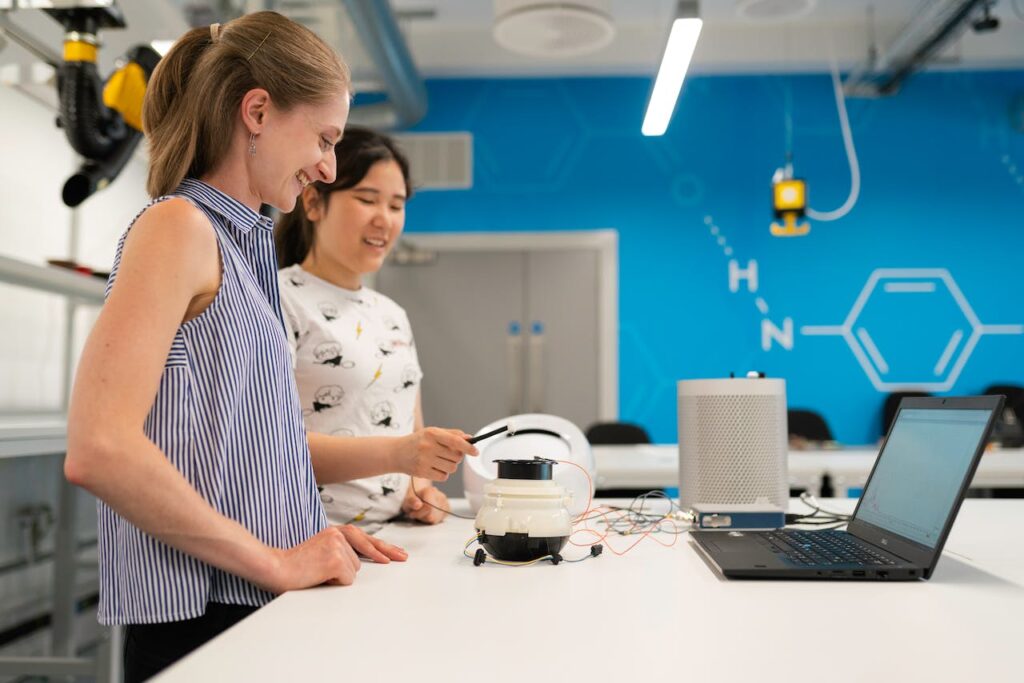The Role of User Testing in Agile Development
-
Bella Williams
- 10 min read

 User testing is a crucial component of agile development, an iterative and collaborative approach to product development. Agile methodologies prioritize the needs and preferences of end-users, with a focus on developing efficient and user-centric products. User testing plays a pivotal role in achieving this goal by providing valuable insights into user behavior and preferences.
User testing is a crucial component of agile development, an iterative and collaborative approach to product development. Agile methodologies prioritize the needs and preferences of end-users, with a focus on developing efficient and user-centric products. User testing plays a pivotal role in achieving this goal by providing valuable insights into user behavior and preferences.
Incorporating user testing ensures products align with user needs, boosting satisfaction and adoption during the development process. Furthermore, user testing enables teams to identify and address any issues or inefficiencies before product release, saving time and resources while improving product quality.
In this section, we will explore the significance of user testing in agile development, its connection to product development, and how mastering the art of agile can lead to successful outcomes.
Understanding Agile Development and Product Development
 Agile development is a software development methodology that emphasizes flexibility, collaboration, and customer satisfaction. This approach focuses on iterative and incremental development, where projects are broken down into smaller chunks, and each chunk goes through planning, design, coding, testing, and delivery. Agile project management employs a collaborative, team-based approach, whereby the team continuously communicates and works together to achieve project goals.
Agile development is a software development methodology that emphasizes flexibility, collaboration, and customer satisfaction. This approach focuses on iterative and incremental development, where projects are broken down into smaller chunks, and each chunk goes through planning, design, coding, testing, and delivery. Agile project management employs a collaborative, team-based approach, whereby the team continuously communicates and works together to achieve project goals.
Agile scrum is a popular framework used in agile development. It breaks down project development into smaller, more manageable bits of work and prioritizes these bits according to their value. Scrum emphasizes teamwork, accountability, and iterative progress toward a well-defined goal. Through a series of sprints, the team works together to develop the product incrementally, with each sprint delivering a functioning piece of software.
Product development is a crucial component of agile development. The focus is always on developing software that meets customer needs and preferences. The iterative nature of agile development ensures that feedback from users is continually incorporated into the development process, resulting in user-centric products that are continuously refined and improved.
Leveraging User Testing for Effective Agile Development
 User testing and agile software development go hand in hand. Incorporating user testing into the agile approach can lead to better outcomes and more satisfied end-users. In this section, we will explore the various ways to leverage user testing for effective agile development.
User testing and agile software development go hand in hand. Incorporating user testing into the agile approach can lead to better outcomes and more satisfied end-users. In this section, we will explore the various ways to leverage user testing for effective agile development.
Test Early and Often
One of the fundamental principles of agile development is iterative testing. The same applies to user testing. Agile teams should integrate user testing early and often throughout the product development lifecycle. By testing in small increments, teams can quickly identify and address any issues that arise before they become more significant problems.
Engage with End-Users
Effective user testing requires direct engagement with end-users. Agile teams must involve end-users at every stage of the development process. Soliciting feedback early and often enables developers to understand end-users’ needs and preferences, allowing them to make informed decisions based on user feedback.
Make User Testing a Collaborative Effort
Collaboration is a key aspect of agile development. User testing should be no different. By involving the entire team in user testing, developers can achieve more comprehensive and thorough testing. Additionally, team members from different disciplines can bring unique perspectives and insights to the testing process.
Iterate Based on User Feedback
User testing is only valuable if developers apply the insights gained from it. The agile approach stresses the importance of iteration – the same applies to user testing. By iterating based on user feedback, developers can create products that meet users’ needs and preferences.
The agile approach and effective user testing are complementary. By leveraging user testing effectively, agile teams can deliver products that are not only efficient but also user-centric. Incorporating user testing into the agile approach requires teams to be collaborative, engage with end-users regularly, and iterate based on user feedback throughout the product development lifecycle.
FAQ
What is the role of user testing in agile development?
User testing plays a crucial role in agile development by ensuring that products are efficient and user-centric. It helps validate assumptions, gather feedback, and identify areas for improvement throughout the development process.
What is agile development?
Agile development is a methodology that emphasizes iterative and collaborative approaches to software development. It focuses on flexibility, adaptability, and delivering value to customers through continuous improvement.
How does user testing fit into the agile framework?
User testing is an integral part of the agile framework as it helps gather insights and feedback from end-users. By incorporating user testing throughout the development cycle, teams can validate their assumptions and make informed decisions to create user-friendly products.
What are some best practices for user testing in agile software development?
Some best practices for user testing in agile software development include involving users early and often, conducting usability tests, gathering both qualitative and quantitative feedback, and iterating based on user insights.
How can user testing help prioritize the needs of end-users?
User testing allows teams to understand the preferences, pain points, and needs of end-users. By incorporating user feedback, teams can prioritize features and improvements that align with the users’ needs, leading to a more user-centric product.
What are the key components of agile methodologies?
Some key components of agile methodologies include agile project management, which involves breaking the project into smaller tasks and iterations, agile scrum, which is a framework for managing the development process, and continuous collaboration and feedback.
How does product development fit into the agile framework?
Product development is an essential part of the agile framework, as it involves developing and improving products based on user feedback. Agile methodologies enable teams to iterate and evolve products based on real-time insights, resulting in products that better meet customer needs.
What are the benefits of adopting an agile approach?
Adopting an agile approach offers several benefits, including increased flexibility, faster time-to-market, better alignment with customer needs, improved collaboration, and the ability to continuously adapt and improve based on user feedback.
How can mastering agile methodologies lead to successful outcomes?
Mastering agile methodologies allows teams to deliver high-quality products that meet user needs. By embracing iterative development, continuous improvement, and user testing, teams can make informed decisions, prioritize user needs, and create products that resonate with their target audience.







